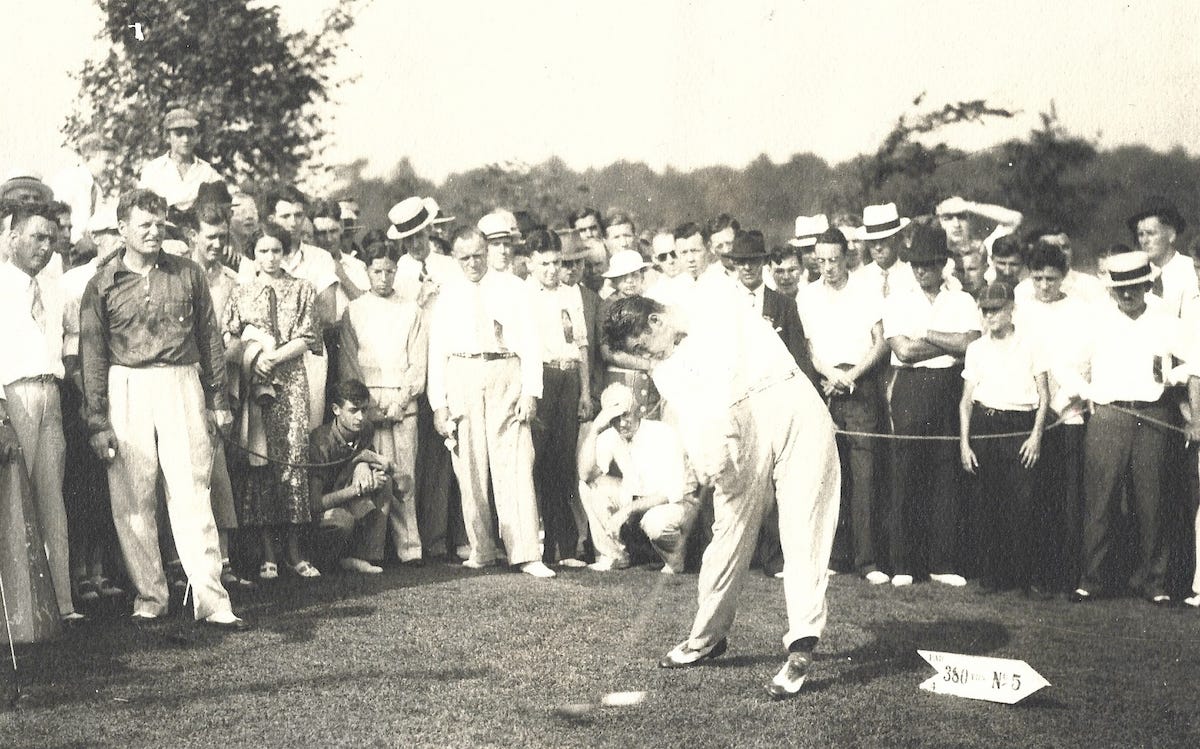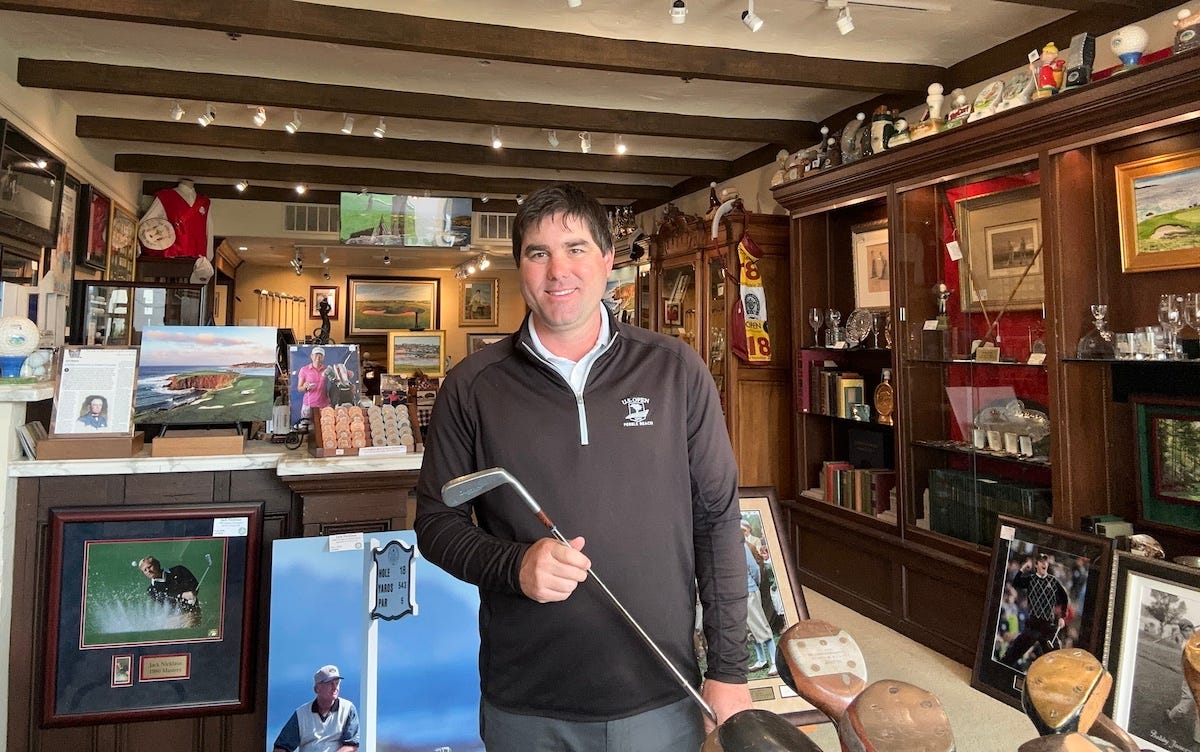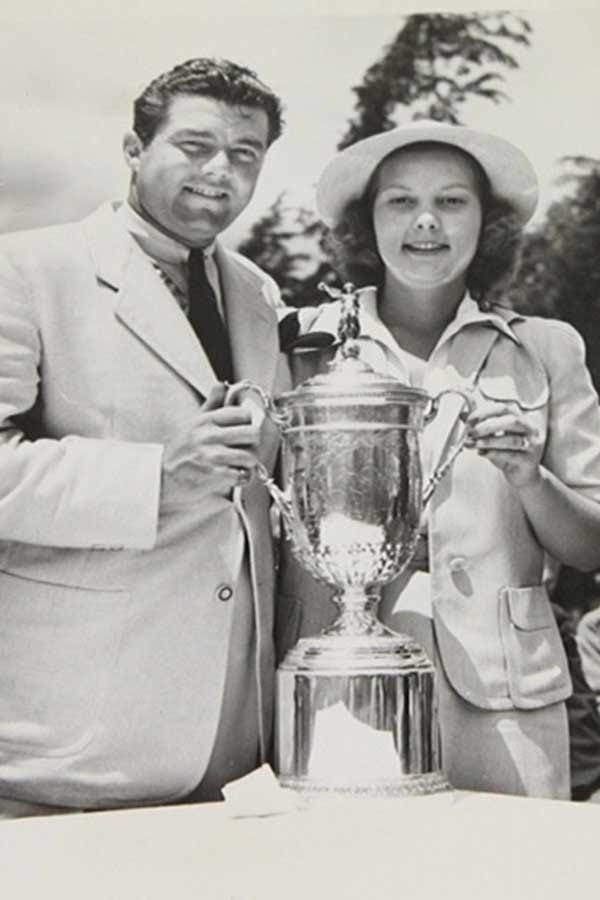Reviving the Memories of Lawson Little Jr.
Because the former U.S. Amateur, British Amateur and U.S. Open champion did not play golf in the television era, his grandson, Chris Little, believes the story of his career is worth sharing — again

:: Ward Clayton
This week, the first U.S. Women’s Open to be played at Pebble Beach Golf Links is a tournament of historic proportions. One of golf’s most picturesque and memorable courses is challenging the world’s best women golfers in their most esteemed championship, which dates to 1946 when Patty Berg won in Spokane, Washington.
On site at Pebble Beach, among all the spectators, officials and players milling about, there’s an ongoing, yet low key, effort to revive a historic figure’s place in the history of the game.
Just around the corner from the Pebble Beach golf shop and in the shops contained within the Lodge at Pebble Beach, the Golf Links to the Past store displays jewels of golf memorabilia, with licensing agreements with Pebble Beach, Jack Nicklaus, Arnold Palmer, Gary Player, Bobby Jones, Gene Sarazen and Ben Hogan. Lots of folks will meander by and be impressed by all the golf history in one place.
Yet, behind the curtain there’s a strong history of a golf figure seemingly lost in time. Even though Lawson Little Jr. was tabbed as “the greatest amateur golfer between Bobby Jones and Tiger Woods” and inducted in the World Golf Hall of Fame in 1980, his record was built in the 1930s, nearly 90 years ago. His grandson, Chris Little, has been intrigued by golf history and has managed the store since the beginning of 2023.
“When I was young, I didn’t really have a taste for golf or have the realization of who my grandfather was,” Little says. “It wasn’t until my mid-30s that I came to understand my grandfather’s place in golf history. Talking with my three aunts, with my father (Lawson Little III) passing away, the struggles of myself and going through old scrapbooks and archives, I reached this real understanding and relationship with the history of the game.”

The record of Lawson Little Jr., is compact but great, just like the man himself. He grew up in the San Francisco area as the son of an Army Colonel stationed at the Presidio. He learned the game at Pasatiempo Golf Club under the tutelage of English instructor Ernest Jones. Nicknamed “Cannonball” or “Tarzan of the Trees” because of his stocky 5-foot-9-inch, 200-pound build and long-driving prowess, a 19-year-old Little came on the scene at the 1929 U.S. Amateur at Pebble Beach, beating Johnny Goodman the day after Goodman eliminated Bobby Jones, who would go on to play Cypress Point later that week, discover architect Alister MacKenzie’s work and hire him to build Augusta National.
Little continued his competitive climb through the mid-1930s, capturing the 1934 and 1935 U.S. Amateur and British Amateur championships, winning 32 consecutive matches in those events, including a record 14-and-13 victory in the 1934 British Am final at Prestwick. The back-to-back titles were a first that has never been repeated and declared “The Little Slam” in deference to Jones’ 1930 Grand Slam. Little won the James E. Sullivan Award in 1935 as the country’s outstanding amateur athlete, an accomplishment among amateur golfers that only Jones (1930) and Little have recorded.
Little, an Economics degree recipient at Stanford, turned pro soon after his amateur accomplishment and was rewarded with a contract, estimated for at least $10,000, by golf club manufacturer Spalding. Jones was responsible for asking Little to join him in publicizing the game and therefore turning pro. That agreement called for Little to tour the country, often with Jones and Horton Smith.
From 1936-39, it was estimated Little traveled 300,000 miles, played 725 exhibition rounds and gave lessons to everyday golfers as a golf nomad who was just married. Among his eight PGA Tour wins from 1936-48 was the 1940 U.S. Open, his only professional major title, at Cleveland’s Canterbury Golf Club in a playoff with Gene Sarazen. Of the $1,000 first-place prize, Little gave his caddie $200 so that he could attend college in Cleveland. Little served in the Navy during World War II, often touring with Bob Hope and Bing Crosby, further curtailing his professional career.

Little’s professional career paled in comparison to his amateur record, but that was a hard act to follow. As a famed club tinkerer, Little often stuffed up to 26 clubs — sometimes with seven wedges — into his golf bag. The USGA used him as an example and limited clubs to 14 in 1938.
Little’s last victory came in the 1948 St. Petersburg (Florida) Open at age 38. He retired to his home, called Fairway House No. 2, left of the first fairway at Pebble Beach — not far from the current memorabilia store — with his wife and four children. Little experienced his first of many heart attacks at age 47, suffered a stroke in his early 50s and died of a heart attack at age 57 in 1968. The home was torn down in 2016 to build an extension of the Lodge.
“I think the fact he didn’t make it to the TV era like Snead, Sarazen and Hogan did contribute to not many folks remembering him,” says Chris Little, 43. “A lot of people question his professional record but he had a lot of health issues, mainly heart problems. But when he was at his best, that was something.”
Upon entering the Golf Links to the Past store, hickory clubs, Arnold Palmer’s irons from the early 1960s, innumerous photos, books, balls, artwork and autographs abound. There’s not much standing out in the store about Lawson Little except for a swing sequence and some photos.
But Chris Little does possess a photo of his grandfather with Babe Ruth, signed by the Babe. The Sullivan Award is on loan to nearby Monterey Peninsula Country Club. An image of perhaps the first photographed hole in one — that’s Lawson Little hitting the ball toward a green in the 1920s — is in hand. CBS broadcaster Jim Nantz, who lives nearby, has purchased the artwork of Samuel Morse, the developer of Pebble Beach, here, stayed once in the Little home in his broadcasting infancy and proclaims an interest in the underrated golf icon.
Via the documentation of his grandfather, aunts and father, Chris Little realizes that a book could be forthcoming and that his grandfather is a story waiting to be told ... again. None of the aforementioned Little keepsakes are currently for sale, but folks have tried.
“A customer came through one day and saw the copy of the Ruth photo and recognized the Babe,” Chris Little remembers. “He was excited about seeing the Babe, looked closer at it, glanced at me and said, ‘You kind of look like this other gentleman on the right.’ It’s kind of nice to have my grandfather with me in the shop.”



